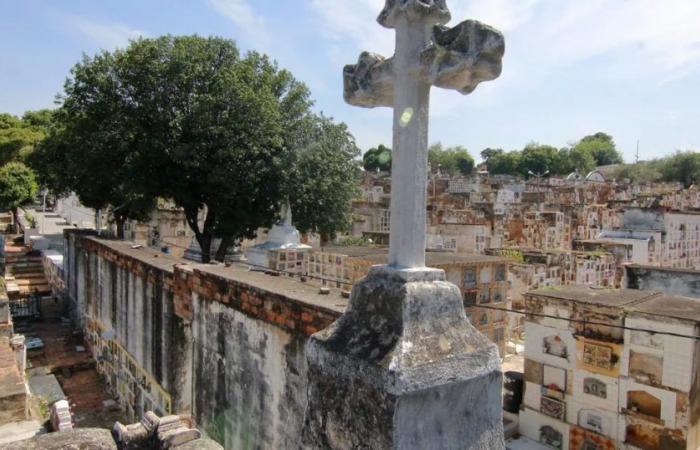During the covid-19 pandemic, a wall of the Central Cemetery of Cúcuta collapsed and revealed black bags full of human remains whose identification was uncertain. That mass grave of bodies, almost no one knew of its existence.
According to an investigation by Maelstrom and The League against Silencethis incident, which occurred exactly on October 10, 2021, set off alarms about decades of irregularities in that cemetery.
You can now follow us on our WhatsApp Channel and in Facebook.
Since that Sunday three years ago, the Search Unit for Persons Reported as Missing (UBPD) and the Special Jurisdiction for Peace (JEP) have intervened in the cemetery on multiple occasions, revealing shocking scenes: open niches, fallen tombstones and human remains in unidentified bags; even with bones and other human remains on walls, ceilings and floors, without proper burial. One especially problematic area is known as ‘The Pool’, an open-air tank filled with bags of human remains.
Investigations have revealed that the cemetery was the main recipient of unidentified and identified unclaimed bodies from 1985 to 2016. It has been determined that at least 770 people, mostly victims of the armed conflict in the Catatumbo region, were buried there.
The lack of capacity and infrastructure during the pandemic exacerbated the problem, according to information mentioned by El Espectador, on February 25, 2024.
María del Pilar Valencia, a magistrate of the JEP, indicated that of the twenty precautionary measures processes that are underway, the case of the Central Cemetery of Cúcuta is the most critical. “Due to the magnitude, severity and failure to comply with the obligations of the local authorities, it is that of the Central Cemetery of Cúcuta”.
This is evidenced by the number of bodies disposed of irregularly and the lack of precise identification. In addition, it is claimed that there are almost four thousand missing people in the North of Santander, whose remains could be in this cemetery.
“The UBPD identified a line of investigation that examines the irregular entry of corpses between 1999 and 2008,” said a representative of the UBPD’s Norte de Santander Territorial Working Group, according to Maelstrom. This period coincides with a significant number of forced disappearances in the department.
During an intervention in February 2024, the JEP and the UBPD found 211 alleged victims of forced disappearance in a monument known as San José. This cemetery could be the largest mass grave recorded in Colombiahe pointed The viewer.
The cemetery, which has been in operation since 1885, has seen poor management practices for decades. Carlos Ariza, forensic anthropologist at the UBPD, explained to Maelstrom that “The problem not only affects the Cúcuta cemetery, but other municipal cemeteries in Colombia, where unidentified bodies do not generate income.””.
José Vicente Leal Dávila, who was administrator of the cemetery, admitted that people not linked to the administration offered vault rental and sale services, according to the investigation of the aforementioned media. This has further complicated the identification process and proper handling of the bodies.
On April 29, 2024, coinciding with the National Day of Memory and Solidarity with the Victims of the Armed Conflict, sand noted the extension of precautionary measures to the cemeteries of Villa del Rosario and Puerto Santander, where the cremation of people in crematorium ovens was confessed..
Testimonies and documents reveal that the cemetery was used as a place to disappear bodies since before the arrival of paramilitarism in 1999. Wilfredo Cañizares, human rights defender, has narrated how the bodies of “victims of the Police F2” were thrown into the cemetery, making visible the involvement of the public force in the forced disappearances.
The illegal armed groups prohibited the entry of the Prosecutor’s Office and the Technical Investigation Corps (CIT) into some rural areas, preventing the recovery of bodies. Luisa Lázaro, from the Progresar Foundation, denounces that “in several cases, the bodies of those killed in combat were not subjected to autopsies.”
The challenge, according to the investigation by Vorágine and La Liga Contra el Silencio, lies in the UBPD being able to identify and hand over the bodies found with dignity. One strategy includes necrodactyly and cross-referencing data in the Forensic Medicine Network Information System for Missing Persons and Corpses (SIRDEC). Carlos Ariza stressed that “each body found has a story and an opportunity to close an open wound in the memory of the armed conflict in Colombia.”






